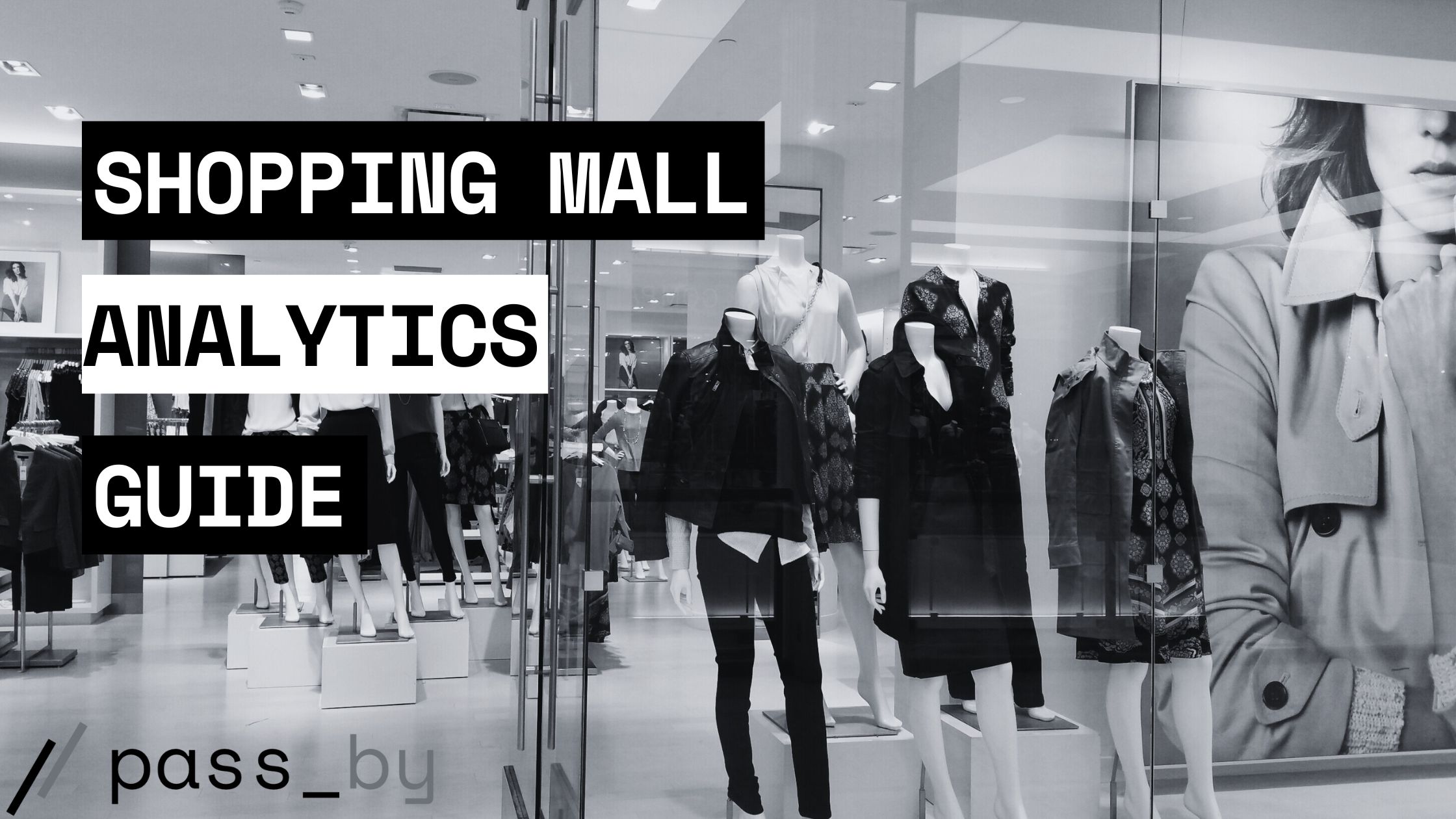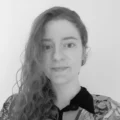While consumers flock to e-commerce and the struggles of brick-and-mortar stores grow, shopping malls must be more creative and decisive to increase foot traffic.
Tenants inside shopping malls have long been ahead of the game when it comes to implementing analytics. But now shopping mall analytics, mall owners can take an active role in decision making, improve tenant performance, and optimize strategies.
Here’s what you need to know about mall analytics:
Key shopping mall foot traffic statistics
- Shopping malls that use analytics can increase revenues by 20 percent.
- Foot traffic across the shopping center industry overall was down by 2.3 percent in 2023.
- retail sales at malls grew more than 11% in 2022 to nearly $819 billion.
- In 2017, the top 10% of best-performing malls attracted 72% of total mall visits in the US.
- Across the retail industry, 2023 Black Friday visits were down by 3.77% compared to 2022 representing a decrease of approximately $92.74 million.
In short, the dynamics of retail are changing overall. The future of shopping malls depends on mall owners’ and tenants’ ability to use data to their advantage, optimizing marketing, operations, and inventory to increase sales and reduce costs overall.
Analzying your shopping mall’s foot traffic? At pass_by, we offer the highest in market accuracy with 94% correlation to ground truth, over 15 data inputs, and a full 90 days of predictive feeds. Book a call now.
What is shopping mall analytics?
Shopping mall analytics measures the performance of a mall from the quantity of sales and visits to the performance of tenants. Analytics is used by malls to:
- Select new tenants
- Measure mall-to-store conversion
- Analyze the performance of current tenants
- Monitor mall traffic
- Check the performance of a marketing campaign
- Create a benchmark report
- Compare your mall’s performance with your competitors
- View visitor demographics

Why is analytics important for shopping malls?
Shopping mall analytics provides detailed insights into Key Performance Indicators (KPIs). Using this information, malls can adjust their strategies and tenant mix.
Analysis is an essential tool for mall owners and tenants to understand consumers and remain competitive.
The benefits of analytics for shopping centers include:
- Understand customer behavior: see where visitors are shopping, when they shop, if shopping events have an effect, and see anonymized and aggregated data about visitor demographics for further optimization.
- Optimize mall operations: Adjust store hours based on visitor activity and adjust tenant mix.
- Analyze marketing campaigns: What is the ROI of your last marketing campaign? Mall analytics can put a number to your marketing team’s efforts.
- Competitive intelligence: How well are other malls performing? Get answers and learn from your competitors using analytics.
- Spot trends: What visitor trends can you see at your mall? See if Black Friday, Christmas and other events have increased, decreased or remained stable over the past four years using foot traffic data.
At pass_by, we offer the highest in market accuracy with 94% correlation to ground truth, over 15 data inputs, and a full 90 days of predictive feeds. Book a call now.
KPIs for shopping malls
Key Performance Indicators (KPIs) play an important part in understanding how customers interact with your mall and how close you are to your goals.
When it comes to analyzing a mall, the data you collect can make all the difference. You’ll need a variety of data points to get a comprehensive view of your mall’s performance.
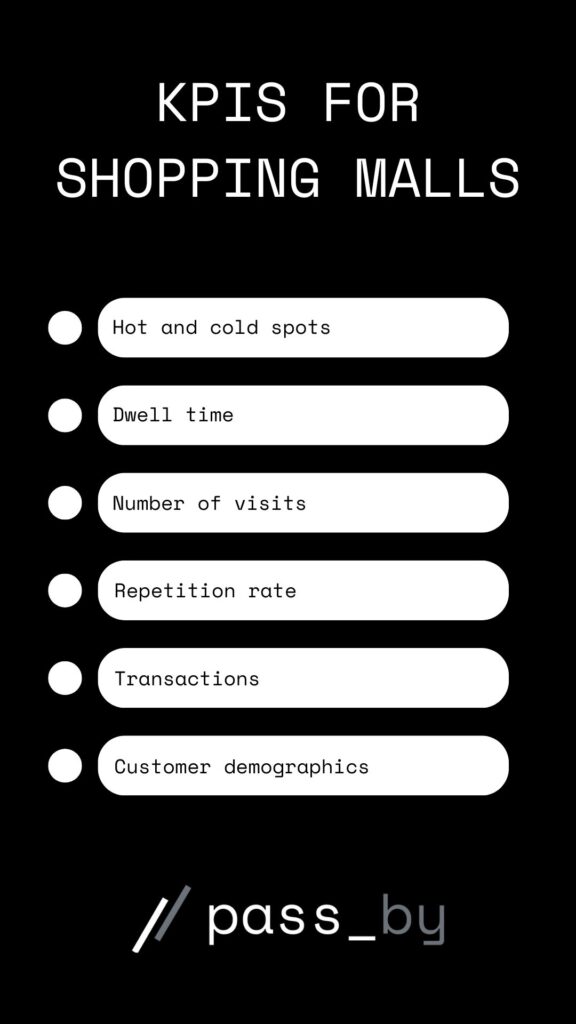
1. Hot and cold spots
By visualizing hot and cold spots, malls can identify which areas attract the most visitors and which ones need improvement. These insights can help you pinpoint high-traffic zones to strategically place advertisements, promotional displays, or even entrances.
Ultimately, understanding these hot and cold spots ensures that every square foot of the shopping mall is optimized for performance and customer satisfaction, making the most out of the available space.
2. Dwell time
Are visitors lingering by that new coffee stand? Or are they spending more time in the children’s play area? These insights reveal customer preferences and behaviors, allowing mall managers to make data-driven decisions.
By analyzing dwell time, malls can strategically place stores, kiosks, and advertisements to maximize engagement.
For example, if data shows prolonged activity near a particular store, it might be wise to place complementary services or high-demand product advertisements nearby. This not only enhances the shopping experience but also boosts sales.
Additionally, understanding where customers spend most of their time can help in organizing mall events and promotions. If many shoppers tend to linger in fashion stores, hosting a seasonal fashion show can draw even more foot traffic and encourage purchases. The key here is to use dwell time data to create a more dynamic and attractive shopping environment.
3. Number of visits
Understanding the number of visits is pivotal for analyzing the future of your shopping mall. By using a foot traffic provider, malls can track the number of visitors with up to 94% accuracy with ground truth verified data.
This data offers insights into peak times and can help in optimizing staffing and enhancing marketing strategies.
Knowing the number of visits helps in better resource allocation, ensuring that areas with high traffic are adequately supported. This can range from more efficient cleaning schedules to additional customer service staff, all enhancing the overall shopping experience.
4. Repetition rate
Repetition rate is a metric that tracks how often customers return to the mall within a certain period. Frequent visits signal satisfaction and can help identify popular stores or mall areas.
Imagine being able to tell which marketing campaigns or seasonal promotions effectively draw customers back.
Personalized offers, loyalty programs, and tailored marketing efforts become not just possible but highly efficient. This results in increased foot traffic and repeat business, creating a thriving retail ecosystem.
Moreover, repetition rate data can be shared with tenants, providing them with invaluable insights. It allows retailers to adapt their inventory, adjust store layouts, and enhance customer service based on actual consumer behavior. When stores align their tactics with data-driven insights, everybody wins—from the mall operators to the individual retailers, and most importantly, the customers.
5. Transactions
Don’t overlook transactions. Sales figures from tenants can help you gauge the performance of individual stores and identify potential issues early on. If a store is underperforming relative to foot traffic, it may need additional support or even a strategic rethinking of its products or services.
6. Customer demographics
Understanding the demographics of your mall’s visitors is essential. With a foot traffic data provider, you can now receive and analyze data on age, gender, and income levels.
This level of insight allows you to tailor marketing campaigns and promotions to different demographic segments effectively, ensuring the right message reaches the right audience. For example, focusing on younger crowds during weekends or rolling out promotions targeting working professionals during weekday lunch hours can drive foot traffic and sales.
Combining these demographic insights with personalized offers will not only improve customer satisfaction but also foster loyalty. It makes shoppers feel understood and valued, turning occasional visitors into regular patrons.
At pass_by, we offer the highest in market accuracy with 94% correlation to ground truth, over 15 data inputs, and a full 90 days of predictive feeds. Book a call now.
How can AI help shopping malls?
The world of shopping malls has changed dramatically in the past ten years from widespread smartphone usage, the rise of e-commerce, to the pandemic. Artificial intelligence (AI) has floated across the industry as a buzzword, applied and implemented as a new trend, but it does have real potential to help malls. Here’s how.
- Personalized Shopping Experiences: AI can analyze customer data and preferences to offer personalized recommendations, making your shopping experience more tailored and enjoyable.
- Automated Customer Service: Chatbots and virtual assistants use AI to provide instant assistance, answer queries, and even help locate stores or specific products within the mall.
- Smart Inventory Management: AI-driven systems can predict demand trends, optimizing stock levels, and reducing waste, thus ensuring you find what you need when you need it.
- Interactive Digital Displays: Using AI, digital signage can interact with customers, providing real-time promotions and information based on the demographics and behavior of passersby.
With these advancements, shopping malls are not only becoming more efficient but also offering a more engaging and customized experience for visitors.
Using AI, malls can predict the number of visitors to each tenant for the next 90 days based on years of historical data pulled from over 15 data sources. Armed with insights for the next 90 days, malls and tenants can make adjustments as needed and anticipate trends.
AI-powered predictive insights for shopping mall foot traffic at the in-store level is a feature of pass_by’s Almanac system. Book a call now to see how AI-powered insights can help you.
How malls can implement AI into analytics
AI has many benefits, but there are a few reasons why many in the retail industry are holding back. These concerns are valid and many are based on the desire for high quality and data privacy among others.
While AI is far from perfect, a lot of concerns can be addressed by using a reliable provider and correctly implementing AI features.
It’s crucial to approach the implementation of AI with a clear strategy. Consider piloting new AI tools in specific areas of your mall operations to understand their effectiveness before a full-scale rollout. For example, integrating computer vision and advanced AI algorithms can significantly enhance security measures and improve customer service by monitoring and analyzing shopper behavior in real-time.
One of the best value adds and ways to implement AI is to start behind-the-scenes. AI is excellent at analyzing large amounts of data into understandable insights and spotting trends the human eye can’t. Leveraging data-driven insights can help you address various challenges such as changing consumer behavior, labor shortages, and supply chain disruptions.
How to use mall analytics
Mall analytics is used at multiple steps, departments, and managers to analyze or monitor performance. These are just some of the use cases and steps to use when completing a shopping mall analysis.
Use case 1: Current tenant analysis
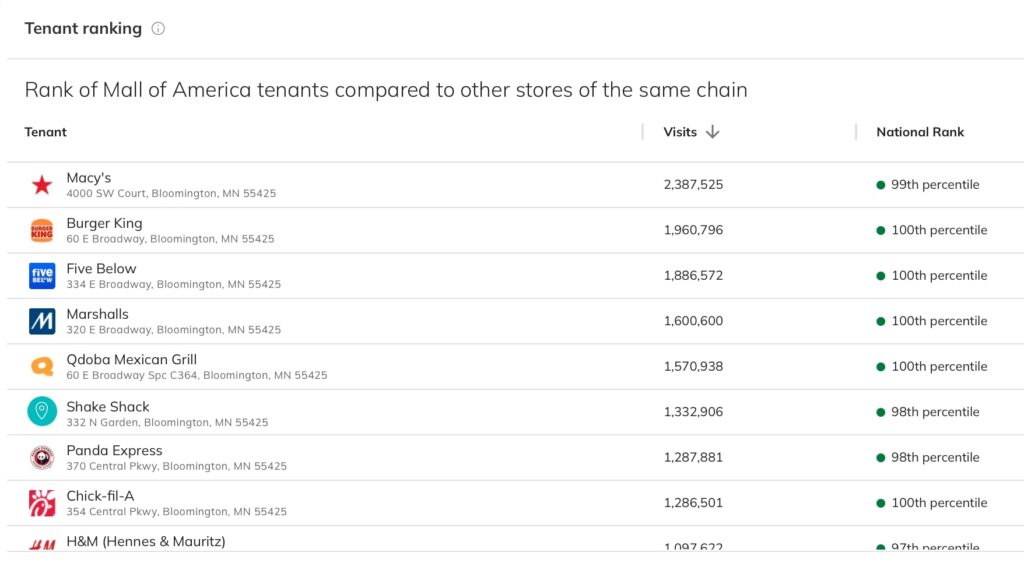
Who are your top performing tenants and who needs more support? Using mall analytics, mall owners and managers can rank retailers within a mall and analyze traffic using custom filters to find the exact information you need.
Analyzing a mall at a store level can tell you where your visitors are going, what interests they have, and the direction your mall could take to stay competitive.
Use case 2: Tenant finder
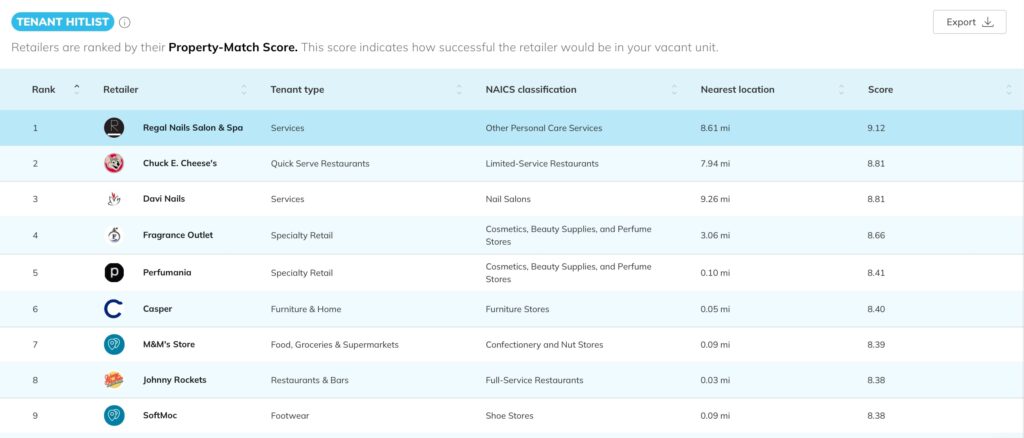
Do you have a gap in your mall? Finding a good tenant to fill the gap can take time and, sometimes, they may not be the best fit. A tenant finder report can reduce risks and offer further insights when making a decision on who your next tenant should be.
To do this, login to Almanac and click “tenant finder report”. From there you can complete the optional step of entering your square footage and anchor tenant. Then load up the report to see our suggested ranking. You can select each potential tenant for further insights on their score.
Use case 3: Research competitors
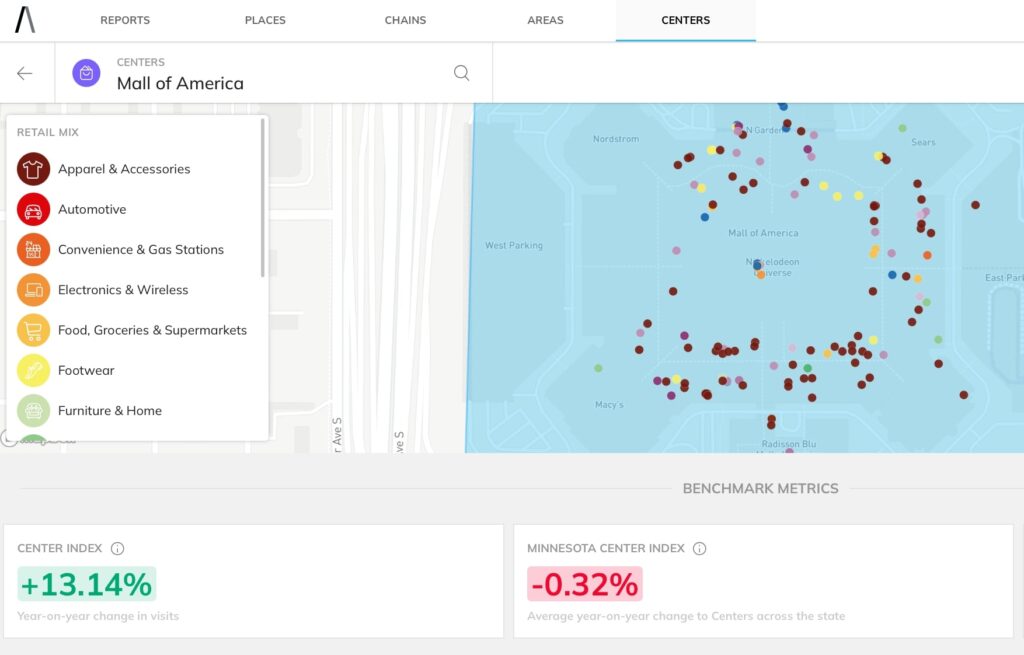
Whether you’re researching a competing mall or a marketing leading center to gain insights, pass_by’s center report tool can offer a wealth of information.
This report displays the tenant mix, foot traffic trends, market information, and demographic insights.
What do you need mall analytics for? We can help. At pass_by, we offer the highest in market accuracy with 94% correlation to ground truth, over 15 data inputs, and a full 90 days of predictive feeds. Book a call now.


